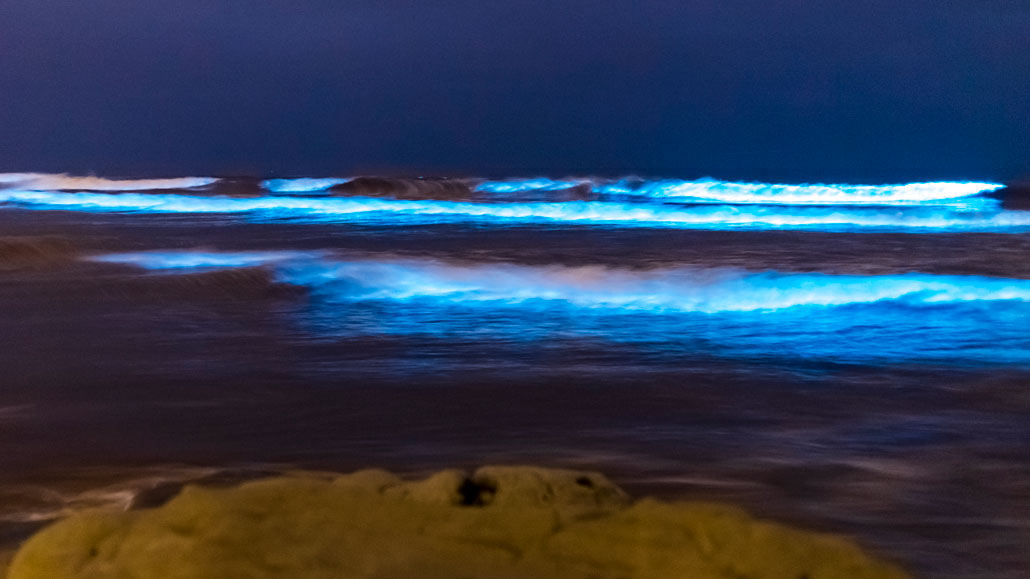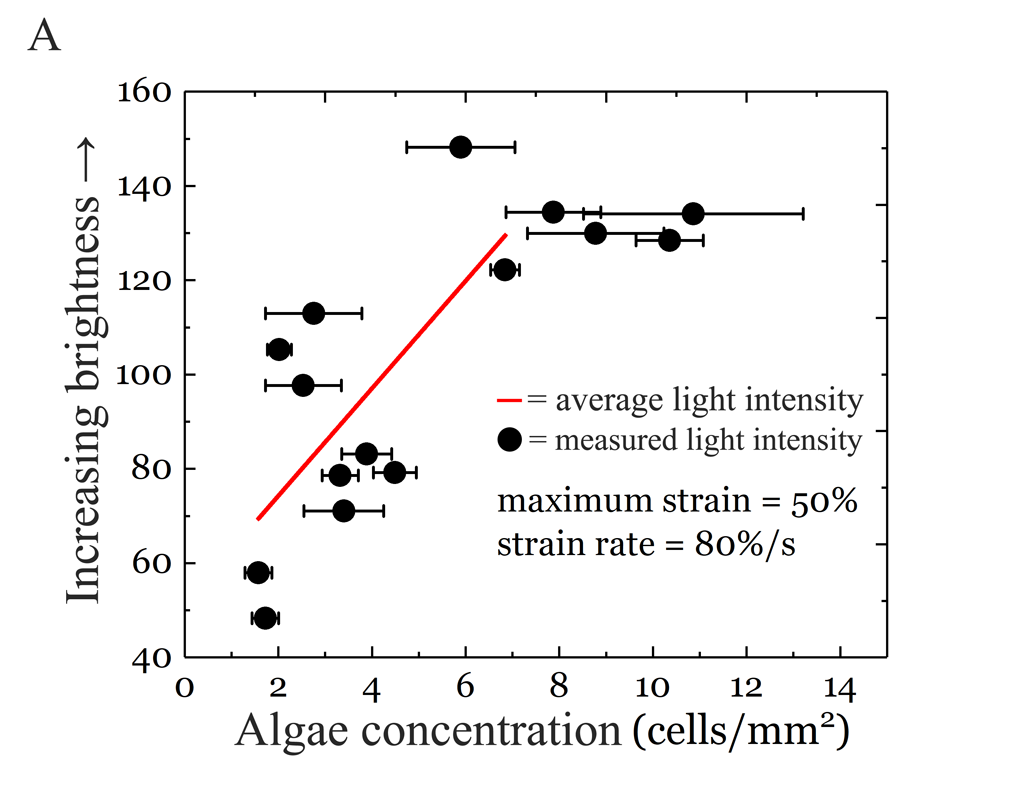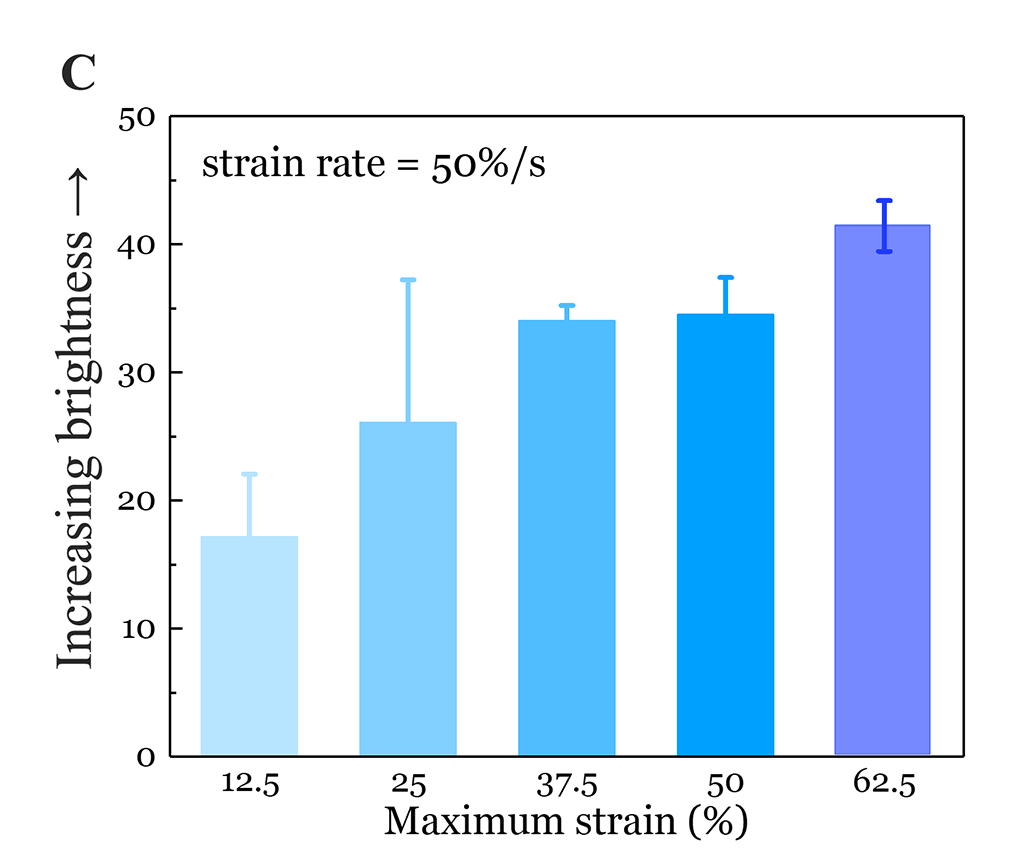Analyze This: Algae behind blue-glowing waves light up a new device
The single-celled microbes glow in response to gentle pushes and tugs

Algae that make these ocean waves glow blue have inspired engineers to create a new device. Using the microorganisms, the new device glows when it experiences a force.
Kevin Key/Slworking/Getty Images
Share this:
- Share via email (Opens in new window) Email
- Click to share on Facebook (Opens in new window) Facebook
- Click to share on X (Opens in new window) X
- Click to share on Pinterest (Opens in new window) Pinterest
- Click to share on Reddit (Opens in new window) Reddit
- Share to Google Classroom (Opens in new window) Google Classroom
- Click to print (Opens in new window) Print
With a touch or a tug, a new device glows — thanks to algae that light up the sea.
Shengqiang Cai remembers the first time he saw such luminous waves from a beach in San Diego, Calif. “It’s just gorgeous,” he says. “It’s a blue light, and you can see it in the dark night.” A mechanical engineer and materials scientist, Cai works at the University of California San Diego.
Cai learned that the light was caused by single-celled algae. The algae (Pyrocystis lunula) are bioluminescent, meaning they make light. They glow when they encounter forces from ocean waves. No one knows why. But that mysterious ability sparked a thought for Cai. “The algae are just like a smart material,” he says. That is, they respond to something outside of them in a way that might be useful.

There aren’t many materials that light up because of a force — especially one as gentle as waves lapping a beach, Cai says. Materials with this rare property might be good for gathering environmental data or monitoring dark places.
To see if glowing algae could be turned into a useful material, Cai’s team grew some of the algae in the lab. They injected the algae into a chamber inside a soft, transparent plastic. Then, they stretched the device to see how brightly the algae would shine.
The team also made a tiny robot full of glowing algae. It was meant to mimic glowing marine animals, such as some squid and jellyfish, says Chenghai Li. He’s also a mechanical engineer and materials scientist. He was part of Cai’s team at the University of California San Diego. The robot has four legs arranged in the shape of an X, and the end of each leg holds a magnet. Another magnet can be used to steer the bot.
The team watched to see how long the algae inside stayed radiant. The bot glowed for 29 days in the lab until the end of the experiment. The team shared its findings July 7 in Nature Communications.
Such robots could be used for sensing their surroundings, the researchers say. For instance, air flowing past an algae bot could cause it to glow, allowing the robot to measure surrounding winds. Or light-up robots could help explore dark environments. For instance, a team of glowing robots in the deep ocean could help scout the area without having to carry lights.
Glowing colors

Researchers injected algae at different concentrations inside plastic devices. Then, they took pictures to measure how much blue light the single-celled microbes gave off (Figure A).

The scientists stretched the devices so they were 50 percent longer than they were originally (Figure B). The team measured how brightly the devices glowed depending on how fast they were stretched (the strain rate).

Finally, the researchers stretched all the devices at the same speed (Figure C). This time, the scientists varied how far they stretched each device. Maximum strain refers to how much longer the device became when pulled, compared with its original length.
Data Dive:
- Look at Figure A. How does brightness change with increasing cell concentration?
- The researchers’ camera wasn’t able to capture light well when it was brighter than a certain level. What brightness was that? At what cell concentration does the brightness seem to stop changing?
- What might these data look like if the camera was able to capture more light?
- Look at Figure B. What’s the range, or spread of values, for brightness on this graph?
- How does brightness change with strain rate?
- Look at Figure C. How does the brightness change with the length the devices are pulled to?
- How might the researchers modify their devices to get a brighter glow?
- What are some ways to use an object that glows when touched or pulled?






